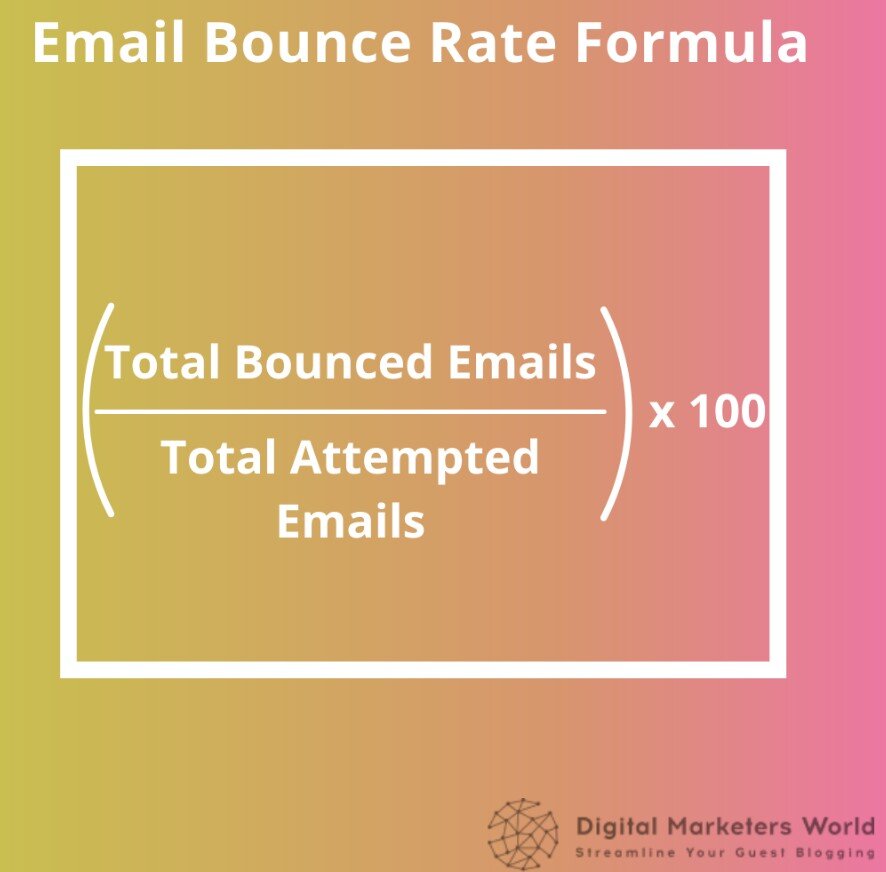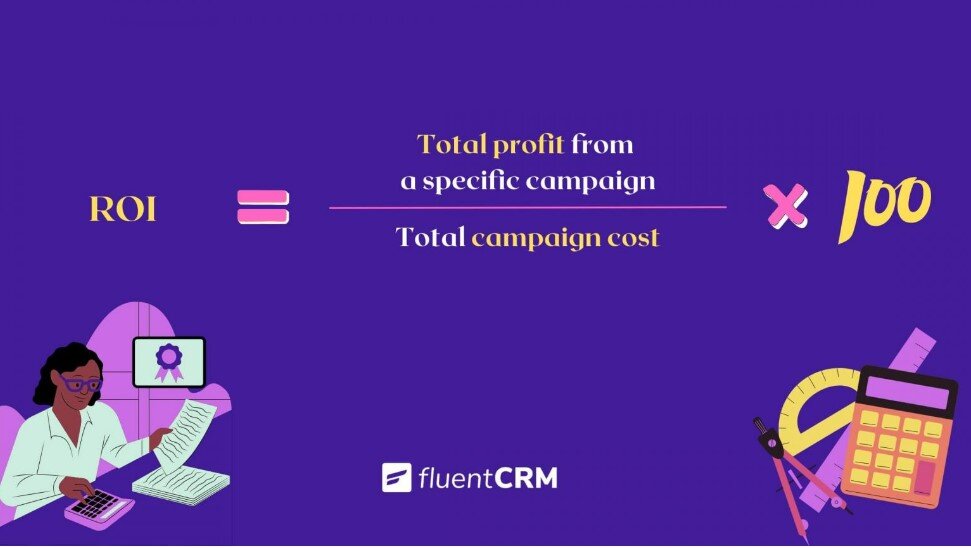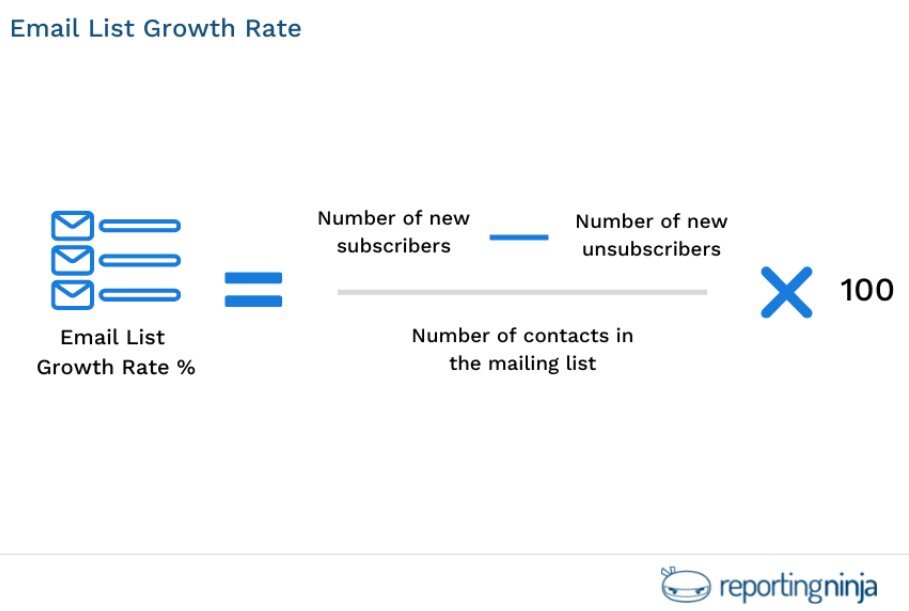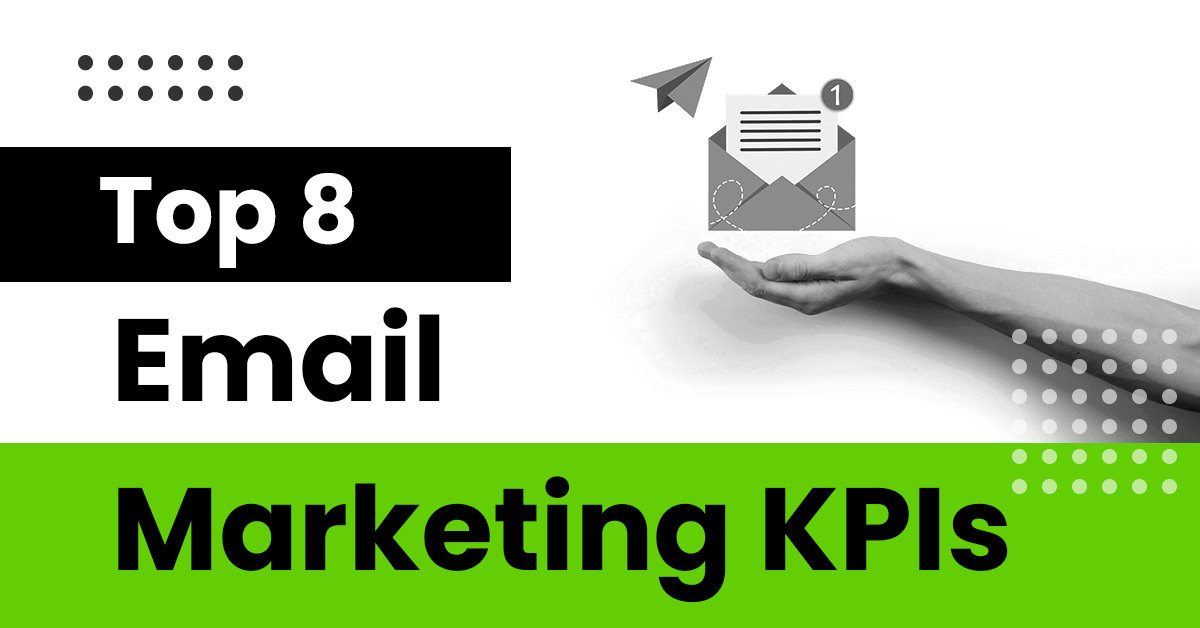No matter the size of your business, email marketing serves as a bulletproof and cost-effective way to engage your audience and drive revenue. For that to happen, you have to know what constitutes a successful email campaign. With so many different email marketing KPIs to track, though, measuring the performance of your emails gets challenging. So, how will you know which metrics matter? That’s why this guide is here, so continue reading to learn all there’s to it.

(Source)
What Are Email Marketing KPIs?
Email marketing key performance indicators (KPIs) are metrics that represent different aspects of your email performance, giving you an accurate representation of your entire campaign. Email marketing KPIs help you understand whether your email campaign is on the right track. Then, these metrics guide you toward making informed decisions based on the specific goal you set for each email campaign.
Why Is It Important To Track Email Marketing KPIs?
Many marketers and business owners are under the misconception that measuring one or two KPIs is enough. However, that’s hardly the case. Understanding the value of the most important metrics for your email campaign is key to evaluating its effectiveness. It’s also what will provide you with a roadmap to email optimization based on which elements seem to underperform.
Relying on just one KPI or putting your faith in one that doesn’t serve your objectives could result in wasting valuable time and effort by taking the wrong actions. Email marketing KPIs offer you a wealth of data – and data is what gets your email marketing from step A to step B. But even if your emails are doing great, monitoring key metrics enables you to identify the steps that lead to optimized email performance and apply them in upcoming campaigns.
We get that figuring out which metrics matter the most based on your specific goal and monitoring them sounds intimidating. Regarding the first part, in this blog we’ll detail the most crucial KPIs so that you can determine the ones that best serve your business. But the second part is actually a no-brainer.
Just invest in a trustworthy email marketing platform like Mailchimp and reputable Mailchimp alternatives that feature detailed reporting, gathering all the key metrics in intuitive dashboards. The best part is that most of these tools are affordable and offer countless options to bring your email marketing to the next level without costing you a fortune.
Top 8 Email Marketing KPIs To Track in 2023 – And How To Improve Them
As already mentioned, there are several metrics to check the performance of your emails. Each of them has its own significance, and you first need to understand it to know how to optimize every email you send. So, read on to figure out which KPIs to track and make the best out of running and managing your email campaigns.
Open Rate
The email open rate indicates how many recipients clicked to open your email. Needless to say that it’s one of the most crucial KPIs to measure, since when recipients don’t open your emails, they have no opportunity to engage with your email content. Many factors affect this metric, such as your sender reputation or email subject lines. A good open rate reflects the effectiveness of your subject lines, as well as the healthiness of your email list. Here’s how to calculate your open rate:

(Source)
This KPI alone isn’t an accurate measurement, though. Why is that? A vast number of your subscribers have image blocking enabled in their email accounts. So, even if they open your email, their action won’t count as an open in your analytics. What’s more, Apple has introduced its Mail Privacy Protection feature that allows users to prevent email senders from accessing this type of information. As a result, all emails appear opened, even if the user hasn’t actually clicked to open them. So, it may be better to focus on your email click-through rate to have better insight into your campaign performance.
How To Improve Email Open Rates:
In case you notice low email open rates, there are a number of actions you can take to improve them, such as:
- Regularly check your email list for fake accounts, email addresses with typos, or inactive recipients to ensure you only send to interested readers
- Stay compliant with anti-spam laws by dispatching emails to subscribers that have given you consent to do so, which will help you maintain a good sender reputation
- Craft eye-catching subject lines that emphasize the value of your email and intrigue readers to open it
- Constantly run A/B tests to compare how different email variants perform. Test one parameter at a time, focusing mostly on the best-performing subject line and the best sending times.

Click-through Rate
The email click-through rate (CTR) measures the number of people who clicked on one or more of your CTAs or links after opening your campaign. It’s probably the most trusted email marketing KPI since it lets you know if you have created a great-performing campaign. Also, as previously mentioned, open rates can be tricky to measure as consumers become more privacy-minded, but a click is a click.
A high CTR means your recipient acted on your call-to-action, doing exactly what you expected them to do and moving down your sales funnel. Let’s see a breakdown of the email CTR formula:

(Source)
High click-through rates show that you’re being successful in promoting your website and increasing its traffic. Your CTR tells you which promotions resonate best with your target audience, as well as the type of content they engage best with. But in case your email campaign contains multiple links or CTAs, figuring out which did the trick is key to replicating its success – or working hard to optimize it.
How To Improve Email Click-Through Rates:
Although there’s no magic recipe on how to increase your email click-through rate, here are some effective tips to keep in mind:
- Work on the visual components of your email to break up long blocks of text and make your email readable and visually appealing. Just make sure you don’t overdo it and include too many heavy elements that skyrocket loading times.
- Segment your mailing list based on the data at your disposal to create and dispatch personalized emails that are relevant to each audience group’s preferences
- Optimize your CTAs based on the insight you gather through A/B testing. Make them bold, actionable, and concise, and ensure recipients notice them and take action.
- Create clear, short, and catchy email subject lines so that readers understand what they are about to read. Also, it should be aligned with the email content. Recipients hate opening emails just to read copy that doesn’t meet the promise made in the subject.
Conversion Rate
If there’s a metric that most marketers stress about, that’s email conversion rate. The conversion rate is the percentage of subscribers who took the desired action after clicking on your link or CTA. For instance, if you send an email about a new product launch, a “conversion” is measured in the number of buyers who bought this new product or who opted to learn more. Your conversion rate represents the action that you want recipients to take for you to reach your marketing objective.
For that to work, it’s crucial that you integrate email CTAs that direct readers to the desired conversion. In other words, it shows how your emails performed in terms of generating sales and leads. Here’s how to calculate it:

(Source)
Your marketing goal may be anything, from downloading an ebook to filling out a form or registering for an event. Whatever the action, high email conversion rates are an indicator that subscribers respond well to your calls-to-action, showing you how to create emails that are effective in turning recipients into customers. It also helps you determine which marketing goals resonate with your target audience.
How To Improve Email Conversion Rates:
There are countless ways to boost your conversion rate. To increase your email conversion rates, consider applying the following practices:
- Recipients tend to engage with emails that feel personal and align with their specific needs. So, adding personalization elements is a one-way road.
- Take advantage of any insight from past email campaigns to track and understand the entire customer journey
- Make your CTAs clear and prominent. Also, optimize their copy by using actionable language and staying away from generic phrases like “Click here”.
- Don’t think of your unengaged recipients as a lost cause. Instead, create dedicated email campaigns to re-target them. Almost anyone can become a paid customer if you target them with personalized and focused messages that address their challenges and pique their interest.
Unsubscribe Rate
And here comes every marketer’s and business owner’s nightmare: the email unsubscribe rate. Not every recipient on your list will stay there forever, and that’s something you should prepare for from the early start. But what exactly does this email marketing KPI represent? It’s the percentage of readers that decided to unsubscribe from your email list by clicking on your unsubscribe link or button.

(Source)
The bad news is that many marketers fall into the mistake of hiding their unsubscribe option, thinking it will reduce their unsubscribe rate. But trust us when we say that’s the worst choice to make. Including an unsubscribe option in your emails is mandatory according to compliance laws like the CAN-SPAM Act. Not to mention that when readers fail in their efforts to find the “unsubscribe” option, they may seriously consider marking your email as spam, which can impact how email providers treat your messages.
How To Improve Your Email Unsubscribe Rate:
Instead of being shady and trying to get away with not including an “unsubscribe” option in your emails, you could look at other factors impacting your unsubscribe rate, like the following:
- Add an “update email preferences” option next to your unsubscribe link to give readers an alternative way of interacting with your brand instead of leaving. Let them customize their preferences in case they want to receive fewer or more relevant emails.
- Add a small survey to your unsubscription process, asking respondents to tell you why they chose to opt out. This will provide valuable insights on what to improve when reaching out to your existing contact base.
- Test your sending times and frequency to figure out what works best for your audience. Also, maintain a regular and consistent sending schedule so subscribers know when to expect your email promotions.
Optimize your email content. There’s no smoke without a fire, so maybe your content doesn’t meet their expectations. So, turn your focus on your content marketing to create relevant, valuable, and laser-focused content that helps readers solve their pain points.

Deliverability Rate
Your email deliverability rate specifies the percentage of emails successfully delivered to a recipient’s inbox. This email marketing KPI tells you whether your email promotions actually reach your prospective customers. Therefore, tracking your deliverability rate enables you to identify and resolve delivery issues before they have a serious impact on your email campaigns.
The deliverability rate varies across industries, but any percentage below 90% should get you thinking. Improving it will help you stay on popular email clients’ trusted senders’ list and build trust with your readers. Let’s check how you can calculate your email deliverability rate:

(Source)
How To Improve Email Deliverability Rate:
There are a number of reasons why this KPI could appear low, so here are some of the things you should be looking into:
- Regularly clean up your email lists by removing inactive accounts or invalid addresses
- Monitor your email sender reputation and your spam complaints
- Choose reliable email service providers that email clients trust and that enable you to set up authentication methods
- Use a double opt-in subscription process so that users give you explicit consent to send email marketing material to their inboxes
- Stay away from spam-triggering practices in your email subject lines and content, such as the use of spam words
- Don’t make it tough for recipients to unsubscribe. Always include a clear and easy-to-spot email unsubscribe option since it makes you appear as a credible brand
Bounce Rate
The email bounce rate measures the percentage of emails that didn’t find their way to your subscribers’ inboxes. There are two kinds of bounces: hard and soft ones. Hard bounces occur when there’s an issue with the recipient’s email address, such as invalid or non-existent addresses. Soft bounces indicate that your email wasn’t delivered to your recipient due to a temporary problem like a full inbox or a problem with the recipient’s server.
High bounce rates translate into ineffective email campaigns that cost you business revenue. Therefore, it’s an email marketing KPI every serious marketer should pay attention to. Monitoring your bounces allows you to fix potential issues and improve your email deliverability to reach your audience successfully. This is the formula to calculate it:

(Source)
How To Improve Your Email Bounce Rate:
Here are a few email marketing tips to keep your email bounce rates low:
- Again, keeping your email lists up to date is essential. Make sure to remove inactive recipients and invalid email addresses.
- Optimize the visual elements of your email and ensure that your email isn’t too large. That way, you reduce the chances of getting soft bounces.
- A double opt-in process enables you to avoid issues with invalid or non-existent emails since recipients have to click on the verification link in your email to confirm they wish to receive emails from your business.
- Always test your emails by sending them to a small segment of your target audience before dispatching them to your entire contact base.
Return on Investment (ROI)
Email ROI is the ultimate email marketing KPI to monitor to avoid wasting valuable resources and ensure your email campaigns are lucrative in relation to the investment made. In other words, it represents the profit your company makes for every dollar spent.
A low ROI means your email marketing strategy is on the wrong track. This metric helps you spend your resources wisely and optimize your strategy. So, the sooner you fix the problem, the better the conversion. Keep in mind that the parameters for measuring ROI may vary based on your business goal. This is a general formula to calculate your ROI:

(Source)
How To Improve Your Email Marketing ROI:
When it comes to improving your overall email marketing ROI, there are a number of bulletproof ways to go at it:
- Enable email automation to take advantage of automation workflows like welcome emails, abandoned cart emails, behavior triggered emails and more. These automated workflows let you engage and nurture recipients effectively without wasting extra time.
- Leverage personalization and list segmentation to ensure the email marketing material you dispatch addresses your subscribers’ challenges
- Optimize your emails for mobile devices to offer readers the best email experience possible, no matter the device they use to read through your email content
List Growth Rate
The email list growth rate measures how rapidly your mailing list is growing or shrinking. Seeing that the main prerequisite for the success of any email campaign is an email list of active recipients, a high list growth rate is a positive sign showing your efforts are paying off. This email marketing KPI lets you determine whether you collect email addresses effectively or not.
By monitoring your list growth, you are able to identify potential issues with your email marketing strategy and take proactive steps to solve them. Remember that it’s normal to lose some of your recipients along the way. However, a low email list growth rate indicates that you need to rethink your email marketing. Now let’s see how you can measure this crucial KPI:

(Source)
How To Improve Your Email List Growth Rate:
In case you are noticing a drop in your email list growth rate, here are some of the factors to look into:
- Rethink elements like the value and readability of your email content, as well as if it is aligned with your readers’ needs and interests
- Focus on the quality of your email list instead of the quantity. An email list with qualified contacts is always better than a large one full of unengaged subscribers.
- Never buy email lists. What you need to reach your email marketing objectives are interested subscribers who have given you consent to send them your business news.
- Reach out to a wider audience through sign-up incentives and options for existing recipients to share your email content on their social media.

Final words
Email marketing and tracking crucial KPIs go hand in hand. For your email campaigns to run smoothly and yield the best results, you need to constantly check how they perform based on the email marketing KPIs shared here. Keep in mind that they not only reflect the success of your emails based on the goals you’ve set, but they also impact your overall performance in the long run.
Your email service provider is a good starting point for measuring these metrics. Also, it’s imperative that you keep running A/B tests to check how different email variants perform and understand which elements work best for your marketing goals. Then, you will have the necessary insight to optimize your email campaigns – that, along with some brainstorming and creativity from your teams, is all you need to stand out and achieve business growth.









